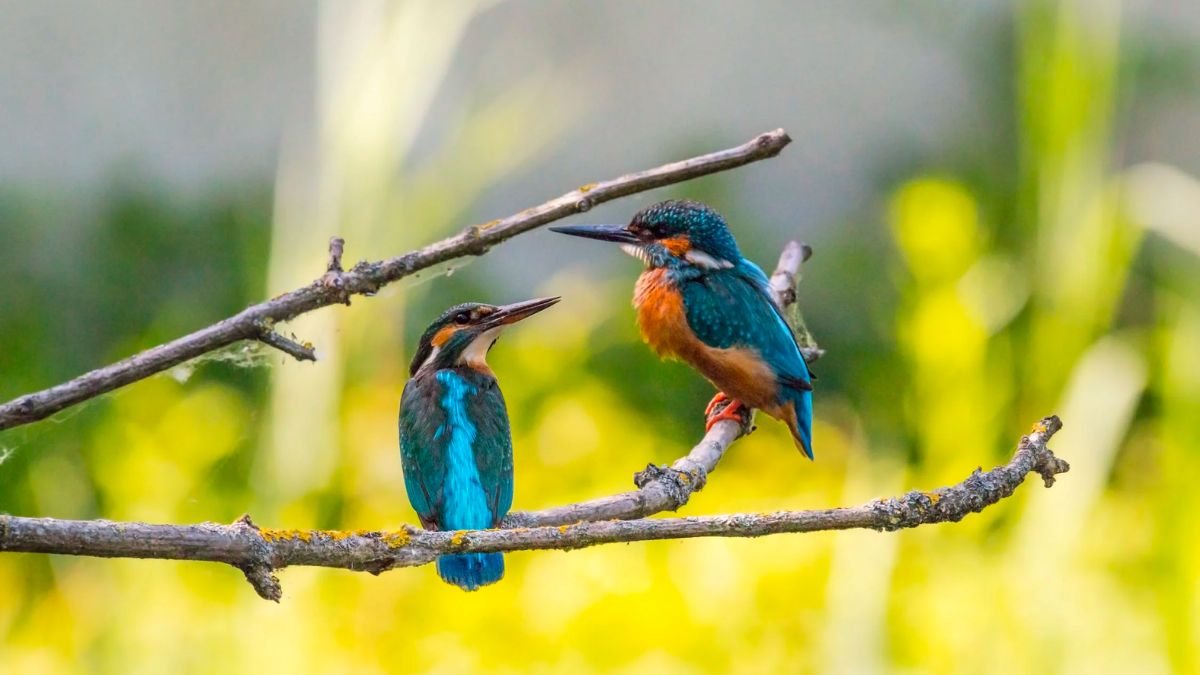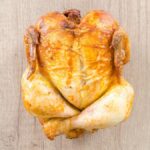Types of Bird
Types of Birds are warm-blooded vertebrates that have a high metabolic rate. They have four chambered hearts and strong, light-weight skeletons. They also lay hard-shelled eggs. The main characteristics of birds are their feathers and toothless beaked jaws.
Hummingbirds
Hummingbirds are one of the toughest players in nature. They have a high metabolism, which means that they must constantly feed. In addition to their food, they also rely on nectar from flowers. This enables them to thrive in a variety of environments.
Hummingbirds can be found in both temperate and cold climates. However, due to climate change, their migratory patterns are changing. Some species are now migratory year-round, while others migrate to warmer climates during the winter months.
Most hummingbirds are solitary, and they rarely form pairs. Unlike other birds, hummingbirds often vocalize in order to establish a territory. The most common call is a buzzing trill, but hummingbirds also sing and chatter.
Hummingbirds eat a number of different types of insects. Their main foods include fruit flies, spiders, and gnats. Other sources of their diet are tree sap and pollen.
Hummingbirds are one of the fastest flying animals. The wings beat up to 200 times per second. When hummingbirds fly, they hold their bodies upright, and their wings flap in a figure-8 pattern. As the wings flap, the bird flies backwards and tilts its body for a moment.
Hummingbirds can be found throughout the Western Hemisphere, including the U.S. and Mexico. There are over 330 species of hummingbirds. Those that are native to the Western Hemisphere include the Rufous Hummingbird, the Black-chinned Hummingbird, and the Anna’s Hummingbird.
Parrots
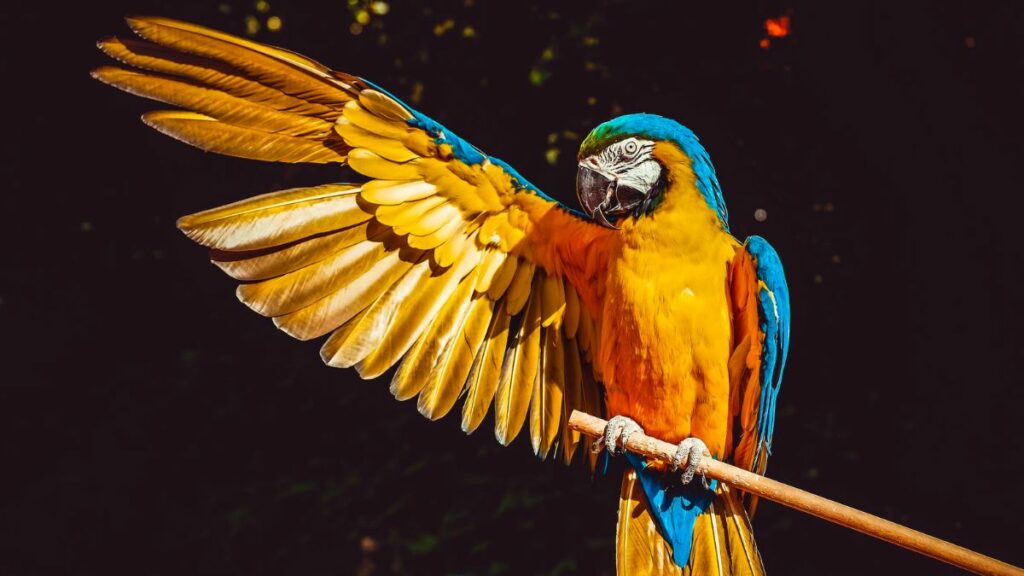
Parrots are members of the family Psittaciformes. They are also known as psittacines or psittacids. These types of birds are divided into 92 genera. The main family is classified into three superfamilies.
There are a wide variety of species. Most of them are native to tropical regions. However, some species are found in temperate climates as well.
Many species are omnivores. Some feed on nectar, fruit, vegetables, and seeds. Others feed almost entirely on meat.
A number of parrots are endangered. One of the most threatened is the African gray. This bird has suffered from logging and habitat destruction. It is listed on the IUCN Red List.
A number of other species are endangered, including the sun parakeet, the lilac-crowned Amazon, and the yellow-headed Amazon. These types of birds are commonly kept in captivity.
Other species, like the Cockatoo, are a little more difficult to care for. They require a good amount of space, and need to be handled gently.
These parrots are known for their colorful plumage. Besides their beautiful appearance, they are also a very social bird. If you are able to provide them with lots of space and interaction with you, they will be a perfect pet.
Owls
Owls are nocturnal birds that have excellent night vision. They are predators, but they also eat fish and insects. Some owls are also known for their ability to recognize the size and distance of objects.
These bird species can be found around the world. Most of them are nocturnal, but some species are day-active. The Short-eared Owl is a medium-sized owl that prefers marshlands and prairies. It is a native of the North American continent.
Owls are members of the Strigiformes order. This is a large family of raptors that includes more than 200 species. There are two main families within the Strigiformes.
The largest owl is the Eurasian Eagle Owl. It is 58-71cm in length. Typically, owls feed on small rodents, but they also eat insects.
In addition to their excellent night vision, owls can move their heads 270 degrees. This helps them identify and locate sound sources. Their eyes also glow orange-red at night, which is caused by the tissue behind their retinas.
Owls are also known for their expressive faces. They can change their color with the help of facial muscles. Aside from their large wings, which cause them to bob, owls also have a disk-like structure that surrounds their bill.
Pigeons
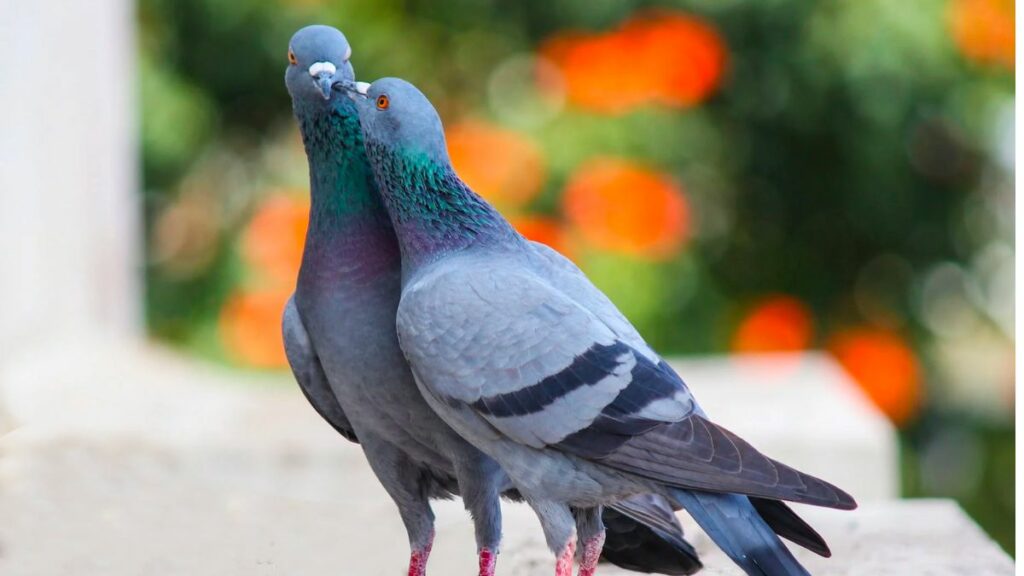
Pigeons are birds that are found all over the globe. They can be classified into three groups. These groups include wild pigeons, domestic pigeons, and fancy pigeons.
The earliest images of pigeons were associated with the goddess Ninhursag in the Temple of Al-Ubaid in Sumeria. Their presence on tombs and temples throughout Crete and Egypt also dates back to these periods.
Pigeons have a great association with humans. They were used as messengers and carried messages during the First World War. However, telecommunications systems improved, and the use of pigeons declined during the Second World War. Although they can still be seen in their natural habitat, they are now critically endangered.
Pigeons are grouped into three classes based on the type of work they do. Domestic pigeons are used for squab production, homing, and sport. Racing pigeons are used for the sport of racing. Wood pigeons feed on fruits, seeds, and vegetables.
Fancy pigeons have beautiful plumage and frills. They are often considered to be the most elegant of the three types. In addition, they are known for their strength and intelligence.
Pigeons are considered as the most intelligent of all the bird species. They have great hearing and sight abilities and can detect volcanoes and earthquakes. Additionally, pigeons can recognize similar faces, making them very helpful.
Flamingos
The Flamingo is a wading bird, generally found in tropical and temperate areas. It can live in a variety of environments, from the Caribbean to the Galapagos Islands. They are known for their pink plumage and distinctive black and white bill.
They are a sociable animal and form close bonds in groups of two or three. Some species are monogamous.
Flamingos tend to congregate in mudflats or shallow salt lakes. Their diet consists of algae and small crustaceans. When they feed, they stand on one leg and dip their bill into the water.
The flamingos’ bill eventually curves downward as they mature. This is to help the bird filter out unwanted particles.
The flamingo’s diet varies from species to species. However, they do rely on the algae as their primary food source. They also consume shrimp, mollusks, and other invertebrates.
Flamingos can live in cold climates if they can find plenty of food and water. They also survive in regions with unpredictable weather conditions.
The largest flamingos can travel as far as 700 miles in a single day. Their flight speed is 60 km/h, which is faster than many birds. While they have impressive wingspans, they may not be able to keep their high speeds when traveling shorter distances.
Kiwis
The kiwi is a flightless bird native to New Zealand. It is part of the family Apterygiformes. They have feathers with hair-like bristles.
A kiwi can live up to 50 years in the wild, but it has been known to die at an early age. In order to survive, a kiwi must be able to defend itself against predators, such as cats, dogs, and ferrets.
Kiwis are also highly territorial. This means that a kiwi will only allow an adult spouse or child to enter its territory. If another kiwi moves in, the male may attack it.
The kiwi is a flightless animal that cannot fly, which means that it makes its home in a burrow, usually dug underground. When the female is ready to mate, she lays one or two eggs. These are pale green and weigh between two and eight pounds. Typically, the female lays three to six eggs per year.
The male and female kiwi normally pair for life. While the female is incubating the eggs, the male will guard the nest. When the female leaves, the male will take over the duties of raising the young.
The kiwi chick is very vulnerable to predators. Even a single cat can kill a kiwi chick.
Ostriches
Ostriches are a type of large flightless bird that belongs to the Struthioniformes family. These birds are native to Africa and Asia. They are omnivores, and feed on seeds, plants, and insects. They can grow to nine feet tall, making them one of the largest land creatures. Their wings help them to balance when running and they use them in mating displays.
Ostriches were once found across much of Asia during the Pleistocene era. But they have lost their ability to fly, so they spend more energy on mating than on flying. Some scientists believe that the birds lost their ability to fly because of harsh conditions in the sky.
Today, ostriches are commonly farmed in countries all over the world. The meat is sold commercially. This animal is also popular for its feathers. Its feathers are sold for decorative purposes.
Ostriches are omnivores and eat seeds, fruits, vegetables, and insects. Their bodies can become dehydrated when they don’t get enough water. They are a bit aggressive in the wild, but they can be friendly to humans.
In the wild, ostriches live in harems with up to seven females. Males perform a complicated mating ritual that includes violently flapping their wings. When the males are ready to mate, they turn bright red.
Types of Bird Nests
Generally speaking, all vertebrate classes, including birds, build nests. Several invertebrates also build nests, but most nests are built by birds. Some of the most common types of bird nests are Mound, Cupped, and Scrape nests.
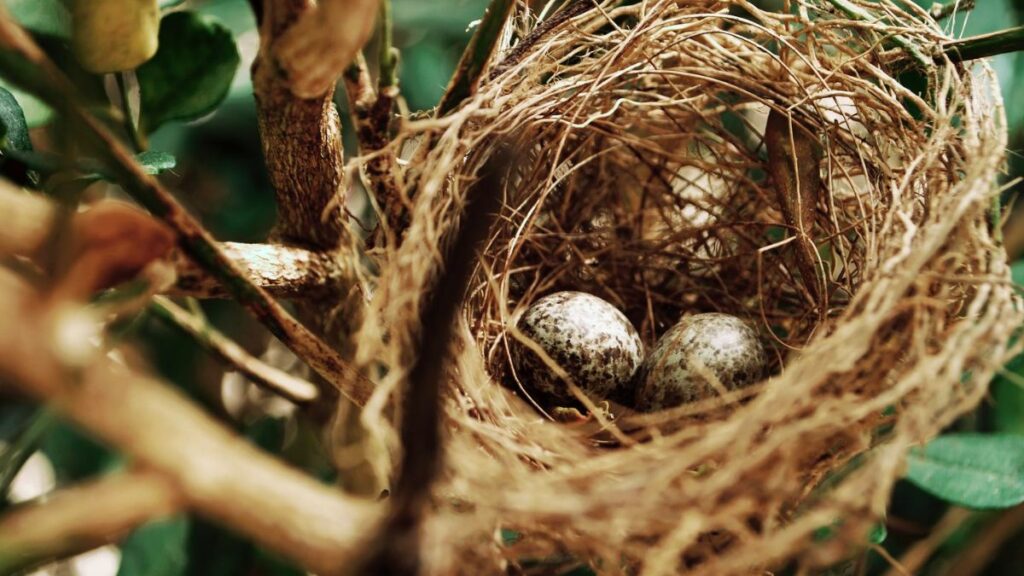
Mound nests
The type of nest a bird builds depends on a number of factors. Nests vary in size, from simple to elaborate multi-chambered apartments. They can be built in the ground or on a tree or building. It is important that the nest is big enough to hold a chick for several weeks. This ensures the chick is well-fed and protected from predators.
In addition to their ability to protect young, nests can be a source of food. A nest’s location provides a good cover from bad weather. Many waders rely on cryptic coloration to keep eggs from being exposed to predators.
The majority of birds build nests. Some species use burrows, while others are not nest builders.
Most nests are circular, shaped like a bowl or a cup. Among the most common types are those constructed by barn swallows, American robins, and ruby-throated hummingbirds. These nests are mainly semi-circular, but they can also be circular in shape.
Some birds, such as the short-eared owl, lay their eggs in a scrape. Scrapes are depressions that are scratched into the ground. Other scrape-building birds include quail, terns, falcons, ostriches, and pheasants.
Another popular type of nest is a mound. An accumulation of plant material, such as twigs, grass, moss, or dirt, forms a cone-shaped mound. Eggs are placed in the middle of the mound. During nesting season, the male adds to the mound and maintains its size.
Sometimes, a bird will usurp an open burrow from other creatures, such as foxes or rabbits. However, a bird can also construct its own burrow. Burrows are commonly used by seabirds, which reside in cold climates. Besides being safe for the developing chicks, they offer a safe place to hide from predators.
Some cavity-nesting species such as osprey, house sparrow, and Eastern Bluebird use natural cavities to bury their eggs. These nests are flexible and can be re-used for several years.
Finally, some species within the Tyrannidae family, including Orioles, create pendant nests. Pendant nests are elongated sacs fabricated from pliable materials such as mud, sand, or a tree branch.
Whether you are a bird watcher or just a lover of nature, you can appreciate the creativeness of critters when you know more about their nests.
Cupped nests
Many birds construct elaborate nests, which they use to raise their young. They make their homes to protect their eggs from predators and weather and to provide a suitable environment for their young.
Birds can use a variety of materials to build their nests. Some are made from mud, while others are built of soft materials, such as lichens. A few species use suspended nests. Others build cupped nests.
The most common type of bird nest is the cup shaped one. These are usually rounded and feature a deep depression in the center. This allows the eggs to be sheltered while they are incubating. Cupped nests are typically made of a pliable material such as dried grasses, twigs, and rootlets. Spider’s webs, mud, and saliva may also be used in cupped nests.
Some of the more common species that build cupped nests are the American robin, hummingbirds, a few flycatchers, and yellow warblers. These nests are usually slung on tree branches or tree forks. Another popular nest is the hanging one, which is woven or slung by a web.
In addition to cupped nests, some birds create pendant, suspension, and mound nests. Hanging nests are created by most species in the Icteridae family. Their construction requires great skill. For example, the Planalto Hermit nest has a single support cable that hangs below the nest.
Other species, such as vireos and weavers, build suspended and pendant nests. Swallows, crows, and a few others, use cup nests. Suspended nests, on the other hand, are surrounded by rims and supported from the sides.
Some birds, such as the Willie Wagtail, the Magpie Bird, and the Rock Nuthatch, build cup mud nests in trees. While they build these nests in places where there is little risk of predators, some kingfishers and other species use cliff edges as their nest sites.
Another common nest is the platform nest. Platform nests are large, flat, and flexible structures that can be placed on tree forks, stumps, or other vegetation. However, they can be quite damaging to a tree in bad weather. Nevertheless, many birds use platform nests, and many reuse them for years.
Platform nests
Platform nests are large flat nests that are used by birds of prey and other species. They can be found in trees, on top of vegetation or on the ground. These types of nests are usually made by herons, eagles, and ospreys.
Depending on the bird’s size and species, a platform nest can be quite large. A great blue heron may construct a nest that can take two weeks to build. This type of nest is made of soft materials that are weaved.
Many species also use a burrow to lay eggs. Burrows provide better protection from predators than other types of nests. However, these types of nests are often more difficult to make.
The cup-shaped nest is another common type of bird nest. This type is commonly found in trees. Often lined with grass or mud, this nest is rounded with a deep depression in the center. Some species like hummingbirds, swallows, and swifts use these types of nests.
Another interesting category is floating nests. These nests are built in shallow water or shallow areas of land. In addition, some waterbirds build these nests directly on the water. Others, such as the Atlantic puffin, nest underground.
Generally, most shorebirds make their nests in a depression on the ground. These nests are reinforced by branches or small rocks. Eggs must be laid deep enough so that they do not roll out of the nest.
Other species, such as kingbirds, ospreys, and ravens, build their nests on electric utility structures. Electric utility structures may also provide nesting substrate for hawks and eagles. Therefore, nesting management may include relocating these nests to platforms to minimize risks to power and equipment.
Some species also construct hanging nests. Hanging nests are made from plant fibers or other materials. The nests may have an open or covered entrance.
Typically, a platform-type nest is built by the same or different pair for several breeding stations. The material is first placed as a base, and the bird then adds new layers each year. Although these nests can be very large, they are flexible and can be rebuilt on the same supporting structure.
Scrape nests
A scrape nest is a type of bird nest that is typically a shallow hole or depression in the ground. It may be lined with feathers, mud, leaves, or shells. Scrape nests are often constructed by birds like pheasants, quail, falcons, ostriches, terns, and ducks.
The common ringed plover, for example, builds a shallow scrape in the sand or grass at a rocky beach in northern Eurasia. The plover’s eggs camouflage the nest, making it less noticeable to predators.
Another type of scrape nest is made by ostriches, tinamous, and vultures. Other birds create scrape nests by scraping the ground and adding a bit of vegetation, mud, or other material to the scrape.
Cup shaped nests are often found in trees and are a simple, round-shaped nest that provides more protection for the eggs. They are made from different materials, including twigs, hair, mud, or human garbage. Some species of small birds also build cup nests.
Another kind of bird nest is the cavity nest. These are commonly found in cactus, cacti, rocks, or trees. Woodpeckers, wood ducks, bluebirds, and other types of cavity nesters make these nests. Many birds nest in abandoned burrows.
Another type of scrape nest, known as a scrape, is made by ostriches, falcons, tinamous, vultures, and pheasants. Aside from the ostriches, other scrape nesters include quail, ducks, terns, and seagulls.
Most bird nests are used by nearly all birds. From the simple to the elaborate, they are constructed for a variety of reasons. For instance, they provide a place for the female to raise the young. Also, they act as a way to identify a particular bird. In addition, they can be weatherproof.
The most common type of bird nest is the cup. Generally, it is lined, and has a definite outside. Depending on the size of the bird that is incubating the egg, it can range from a simple circular nest to an intricate, domed one.
In general, bird nests are created to provide a place to live for the birds, and to help them raise their young. They can last for years and even decades.

